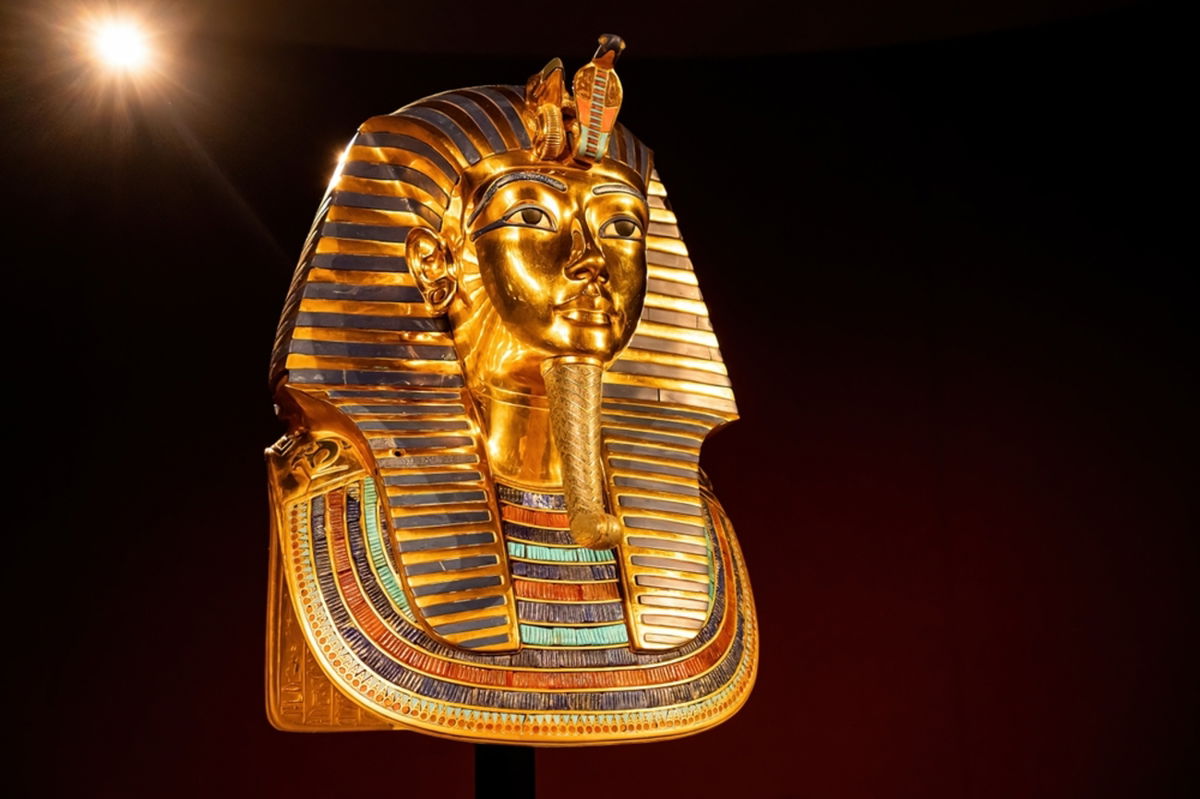King Tutankhamun’s golden mask. Credit: Stockholm, Shutterstock.
For the first time since their discovery more than a century ago, all 5,398 artifacts belonging to King Tutankhamun will be exhibited together at Giza’s Grand Egyptian Museum (GEM), according to the Egyptian Information and Decision Support Center (IDSC).
The announcement, made in a video released by IDSC on October 29, revealed that these artifacts, which were previously housed across multiple facilities including the Egyptian Museum in Tahrir, the Military Museum, and Luxor, are now consolidated under one roof.
Egypt’s “Golden King” returns home
GEM’s Director of Antiquities Restoration and Transportation Issa Zidan confirmed that the museum’s exhibition halls are equipped with advanced air-conditioning systems and state-of-the-art glass bottles to ensure optimal preservation and exhibition quality.
Spread over 7,500 square meters, the new Tutankhamun Hall will display some of the most iconic items ever excavated from the young pharaoh’s tomb.
- A golden funeral mask studded with turquoise and carnelian.
- A royal ceremonial chair decorated with ivory, ebony and gold.
- A temple with a golden canopy and a vast collection of jewelry and ornaments.
Zidane added that the exhibit is designed to provide visitors with a “sensory and digital journey” through the life and reign of Tutankhamun, using interactive storytelling and cutting-edge technology.
A century since the discovery of Tutankhamun’s tomb
More than 100 years have passed since Howard Carter discovered Tutankhamun’s tomb in 1922. The upcoming full exhibition marks a historic milestone for Egypt’s cultural heritage, uniting all recovered items for the first time.
But now that King Tut is back in the spotlight, one can’t help but wonder… After the infamous “Pharaoh’s Curse”, who would dare visit the Grand Egyptian Museum?
Legend has it that several people involved in opening the tomb, including Lord Carnarvon, who financed the expedition, became mysteriously ill or died shortly after.
However, historians later dismissed this theory and instead pointed to bacteria and mold inside the tomb.
According to the official video presentation, “The Golden King has returned to share with the world the brilliance of ancient Egyptian civilization.”
The Grand Egyptian Museum, located near the Pyramids of Giza, is expected to become one of the world’s most visited cultural landmarks once it officially opens. For travelers, the Tutankhamun Exhibition offers a unique opportunity to experience Egypt’s ancient history in a unique environment that combines heritage and modern technology.
View all world news.








